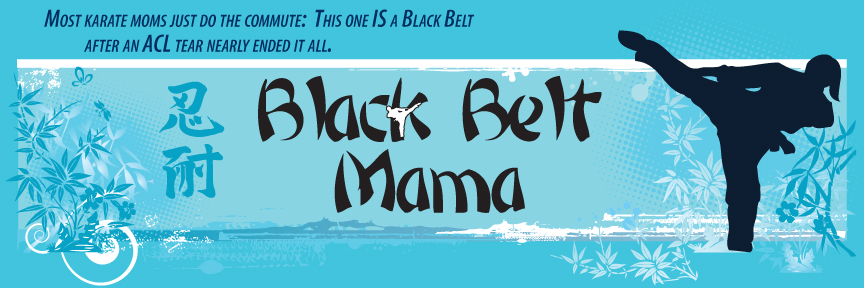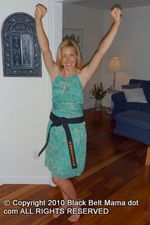January 31, 2015
The Sport Specialization Debate and Why I’m Sick of Hearing About It
“When dealing with critics, always remember this: Critics judge things based on what is outside the context of their understanding.” -Shannon L. Alder
Several years ago, during the summer swim season, a swim dad approached me and began asking me questions about my oldest daughter and her swimming. At that point, she had been a year-round swimmer for two years. Her improvement from the two summers prior was nothing short of remarkable. I assumed he was talking to me because he was interested in the USA swimming program where she swam, the one I was President of at the time. However, after a few minutes, the conversation turned into something much different. He began talking about kids who play just one sport, and how I was setting my daughter up for injury and failure. Because he didn’t know me (or take the time to get to know me), he was unaware that my daughter had played T-ball, field hockey and had taken a combination of karate and ju-jitsu classes for five years, not to mention the voice lessons. He didn’t know that after trying all of those things, she came to me and said that swimming was what she really loved and that she wanted to focus on that more intensely. It was especially surprising to me, because at the time, she wasn’t very good at it. I was impressed with her desire to get better and her obvious passion for a sport she loved, despite not having had much success.
I spent that summer, and many after it, listening to parents whose kids did not swim year-round making excuses for why their kids weren’t as fast as my kid. I don’t know why they felt such a compulsion to explain this to me. I certainly wasn’t concerned with what their child was or was not doing; unlike them, I wasn’t interested in making comparisons. The nice thing about swimming is that there are times achieved at each meet, so our daughter was only comparing her performance to her prior performances. And she liked what was happening as she watched her times continue to drop. I made it a point to avoid this dad and others like him. I call them the compare/contrast parents. They are constantly holding up their child and anyone who competes against them. They are constantly looking for all the ways their child is better, and all the ways they can get the edge for their kid. When they find one thing that someone else is better at than their child, then it’s excuse-making time. It’s time to cherry-pick an article or two that supports their viewpoint and puts others down to make themselves feel better. It must be exhausting to live that way, which is why I don’t.
Enter the Facebook article re-posts accompanied by stern warnings for parents of single-sport kids, of course from the parents whose kids play multiple sports. A rudimentary chart began circulating on Facebook regarding Ohio State’s football recruits. The number of players on the team who played multiple sports: 42; the number who were one sport only: 5. I guess this is supposed to send me a message that if I want my daughter to play football for Ohio State, I better sign her up quickly for a bunch of other sports. I see this every couple months, the onslaught of negativity at kids (and their oh-so-naive parents) who focus on one sport earlier than others. I get it; there are only so many sports scholarships out there. All of our kids are competing for them, I guess, if that’s your focus already, when your kids are still in elementary and middle school (eye roll). Here’s the thing about our family: while my daughter loves to swim and has expressed that she would possibly like to swim in college, we did not engage her in year-round swimming at the age of 9 so that we could start her on the road to a swimming scholarship. If she gets one some day, that would be wonderful; and I’m sure we’ll all be very pleased. However, that is not, nor has it ever been, our focus with her. Our focus has been on enabling our daughter to achieve at the level she wants to, in a sport that she loves.
All of these articles and re-posts make the same faulty assumption, that parents who support their child specializing in one sport expect scholarships because of it, and force their child into specialization for this very reason. This is a completely false notion and writers of these articles, and all the parents who post them, should stop making assumptions about parental intent. Many things can change from the time a child is elementary/middle school aged to high school, when coaches are actually starting to look at your swimmer. There are a lot of swimmers who peak at age 12 or younger. Performance levels as a “10 and under wonder” do not translate into indications of future success, which is why we have always tried to stay level-headed about swimming, our daughter’s achieved times, and what that might mean for her future. The truth is, what she’s doing now, or what she did years ago, means next to nothing when it comes to her future swimming. She swims because she loves to swim; she has zero interest in playing other sports right now. And although other parents clearly feel very strongly about our daughter’s choice, her choice is perfectly ok.
Swimming has done wonderful things for our daughters. It has allowed them to get into crazy good shape; their endurance is unreal. They have learned about the importance of commitment, attention to detail/technique; and we strongly feel that it’s made both of our girls into very focused students as well. They’ve learned time management and study skills because they work around their swimming/school schedule. In addition, swimming has had a tremendous influence on our younger daughter’s health. A year ago, doctors thought she may have early onset scoliosis. Because I went through the 6-month checkups myself as a kid, I wanted to do something different for my daughter, to see if we could avoid future treatment. After 6 months of seeking help from a PT friend of ours, and having those exercises reinforced during her dry land training at her swim club, and through her in-water practice, the curve in her spine went from almost 9 degrees to less than 5, a number not even considered scoliosis. The specialist at Shriner’s was shocked into complete silence as he compared the two x-rays, before quizzically wanting to know what we were doing. When we told him about her swimming and dry land training, he was shocked and impressed, and told us to keep on doing what we’re doing. It turns out that swimming may save her from the dreaded 6-month checkups for a crooked spine.
Most of the articles warning against single sport specialization point to burn-out and overuse injuries, which is certainly a major concern if your child is a pitcher or a quarterback, using the one same explosive motion all the time, every day, year after year. Swimming is a very symmetrical sport, and a life-long sport with good reason. Have you ever checked out the lap lanes at your local gym? They’re loaded with people who’ve been swimming for decades. A couple articles have pointed out that swimming is quite different from other sports when it comes to specialization in several ways. One of them, “Sport Specialization at a Young Age: Is Swimming Different?” by Dr. Rod Havriluk, Ph.D. states the following:
“The most obvious difference between swimming and other sports is the performance environment. Most sports are land-based, while swimming is performed in the water. Natural human movements (like running, jumping, and throwing) that are applicable to most land-based sports are ineffective in the water. While diversification offers practice on similar skills under different sport conditions, these skills are counterproductive for swimming. Humans cannot rely on innate movement patterns to achieve an expert skill level in swimming. Swimming skills must be learned and the age at which an athlete specializes must be considered.
Most land-based ball sports require movement skills in many directions using varying amounts of range of motion at each joint. Practice for a secondary sport may even train an athlete in a select skill better than the primary sport. For example, practice anticipating and reacting to an opposing player in basketball may help develop similar skills in football. Swimming, however, requires, repetition of the same effective movement sequence on every stroke cycle. Swimming strokes are generally not even remotely replicated in other sports, and certainly not in the water.”
A year ago, my oldest missed a bunch of practices heading into a big meet due to illness. She did not have a good meet; every stroke seemed “off.” Her coach talked to us about swimmers sometimes “losing their feel of the water” when out for extended periods of time. The more practices she attends, the better her feel for the water has been. Non-swimmers won’t understand this concept, but for any swimmer/coach, they know exactly what it means when discussing whether a swimmer has a feel for the water or not. Endurance also has something to do with the reason many swimmers choose to stick with the sport year-round. After even a two-week break, many swimmers have to fight to get back to the level they were at only weeks ago. Those initial practices at the beginning of the season are always brutal for that very reason. It’s also the reason that many swimmers choose to stay in the water. Another key difference when it comes to swimming versus other land-sports is the flexibility required to be effective at the sport of swimming.
“For example, an effective arm recovery in freestyle and butterfly utilizes the full range of motion at the shoulder joint. A young swimmer who learns to use this range can retain it as he/she grows. However, swimmers will not naturally use their full range of motion without considerable quality practice.
In contrast, swimmers who wait until the teenage years to specialize may already have a reduced range of motion at the shoulder, making it far more difficult to master technique elements like the arm recovery in free and fly” (Havriluk).
And here’s something else to consider: “In addition, young teenagers who have not yet specialized may not be very competitive. Less competitive swimmers often have fewer opportunities as far as training time, contact with more skilled coaches, and access to advanced technology. A delay in specialization can present substantial obstacles to ever achieving expert level skills” (Havriluk). I saw this during the first year my daughter swam competitively, before she got involved in club swimming. A “back of the pack” swimmer, the attention that she got was minimal. With 20 kids per lane, how could you blame the coaches for not correcting every technique problem they saw? They simply didn’t have the means to do so. My daughter attended practice regularly, but constantly reinforcing the same bad habits because you don’t know the best techniques isn’t doing you a whole lot of good. Moving to a specialized program, with a more manageable number of kids per lane and a better coach:swimmer ratio made all the difference for her. Choosing to focus on swimming exclusively gave her more free time at home to just be a kid when she wasn’t swimming, riding her bike, reading good books, etc. It killed me when she wanted to quit karate/ju-jitsu and focus just on swimming, but being over-scheduled with too many activities/sports for the sake of diversification and not allowing kids to get proper rest isn’t beneficial either.
Dr. Havriluk concludes with this final statement: “A program that optimizes the quality (emphasis mine, not his) of instruction can offer the advantages of specialization at an early age without the negative consequences.” It’s a sentiment expressed by more than one expert, the idea of quality instruction making all the difference. In the journal article, “Practice Makes Perfect and Other Curricular Myths in the Sport Specialization Debate,” author Jody Brylinsky provides a wealth of evidence that agrees with this concept. “It is not the specialization or diverse sport-training experience that is critical, but the type of training and instruction provided in any training context” (Brylinsky). This concept makes a lot of sense. I have frequently heard of swimmers destroying their shoulders at a young age. But when you couple these swimmers with a steady stint with a coach who’s had zero recent education, who is still pulling work-outs from his memories of three decades ago and killing kids with “junk yardage,” it’s not all that surprising. Call it an overuse injury if you want, but one could easily argue that many of these types of injuries happen because of by sub-par coaching.
There are plenty of coaches out there whose focus is on winning right now, who coach more from ego than they do from the desire to see athletes succeed long-term. I’ve seen them first-hand and avoid them at all costs.These are the ones you want to avoid, especially if your child has chosen to specialize. “Sport skill instruction and sport training that focus on long-term athlete development provide the cumulative advantage to nurture talent, regardless of the training context in which it is offered (Brylinsky). The goal then, becomes placing your young athlete in capable and educated hands. “While multiple-sport participation is presumed to inherently provide a variation in training, this may not always be the case. Many sports require the same physiological demands and use similar training routines” (Brylinsky). The common theme when it comes to avoiding over-use injuries and burnout seems to be an appropriate period of rest, which can be obtained in a singular sport or in a multi-sport environment. Appropriate rest is very important when it comes to athletes of all types. Educated coaches know this. When choosing a program and/or coach for your child, one question to ask them is about their coaching education and whether or not they continue to learn. Coaches who attend conferences, research and move up the levels in ASCA, who try new things at practice and who says things like, “I read an article about. . . ” are the kinds of coaches you want to expose your young athletes to as much as possible. Our oldest daughter started swimming competitively at the age of 8, late by comparison to many of her friends who had been swimming since the age of 5 or 6. The best choice she made (you read that right. . . SHE made the choice), was to ask us to find a private lesson coach to learn proper technique from so she improve. The goal for her was catching up and being competitive, not surpassing everyone and getting a college scholarship. Remember, she was 9 when she made the decision to begin swimming year-round. While I’ve met many parents who fantasize about the idea of college scholarships when their kids are 9, I haven’t met an adolescent yet who has been signed by a college. We tend to be of the level headed swim parent variety: our kids swim because they like to swim, not for the potential freebies they could get down the road.
Although focus on technique is important, especially with a sport like swimming, Brylinsky also stresses the importance of “deliberate play,” defined as “activities regulated by age-adaptive rules controlled by children to maximize enjoyment.” In these types of activities, “children use experimentation of movements without worrying about performance outcomes, fostering an implicit approach to instruction” which can result in “increased retention of new skills, reduced occurrence of reinvestment in complex skills, a heightened sense of competence, and a greater resistance to stress” (Brylinsky). I can think of many activities I’ve seen my swimmer girls do at practice (and at meets) that would fit into these categories, working on achieving negative splits being just one of them. “However, counting on diverse sport opportunities to naturally provide “deliberate play” or “implicit instruction” would be a mistake. Just changing the sport context does not create these useful instructional techniques;” and “Diverse sport experiences will not necessarily produce these learning environments any more than sport specialization prohibits them” (Brylinsky). Again, this relates directly back to the education and skill of your child’s coach. “It would be a mistake to assume that diverse sports opportunities will provide more problem-solving experiences for athletes than specialized single-sport training. Highly qualified coaches will be able to provide an abundance of meaningful practice drills that maximize active participatory-learning in either context. Unqualified coaches, even in a diverse sport environment, may have limited ability to develop an interactive practice or facilitate athlete-led error detection and correction” (Brylinsky). This is one of the things I have always appreciated about USA Swimming, the many opportunities the organization gives for coaches to learn more, via online education, regional conferences and through mentoring programs.
Specialization vs. multi-sport participation seems to be the new parental debate; but it doesn’t have to be. Parents of kids who play multiple sports need to stop making the following assumptions: kids specialize for scholarships, kids specialize because of coach/parent demands. While these assumptions may be accurate for some athletes who specialize, none of these apply to our family, and many other swim families I know. Sometimes, there’s just a kid who loves a sport, and wants to do just that sport. It’s as simple as that. And while I guess I should appreciate the multi-sport participant’s parents for wanting to look out for me and mine, we’re completely comfortable making our own decisions regarding our family, just as I’m sure they’re comfortable making decisions for theirs. People don’t fit into prescribed little categories; and perhaps everyone should try being less judgmental. “The lessons to be learned, however, lie in what the dialogue tells us about the need to focus on quality training and instruction in either sport setting” (Brylinsky). Does your child have high quality coaches in all four sports they play? It’s something to think about.
And if your focus is on your child achieving elite status in their sport of choice, there’s another factor that seems to set apart those who go on to elite status from those who don’t. “When one considers in addition the prerequisite motivation necessary to engage in deliberate practice every day for years and decades, where most children and adolescents of similar age engage in play and leisure, the real constraints on the acquisition of expert performance become apparent. The commitment to deliberate practice distinguishes the expert performer from the vast majority of children and adults who seem to have remarkable difficulty meeting the much lower demands on practice in schools, adult education and physical exercise programs” (Ericsson, Tesch-Romer). Achieving elite status in a sport can not be boiled down to doing just any one thing. It’s a combination of things that make athletes successful: genetics, commitment, motivation, deliberate practice, stellar coaching, nutrition, proper rest periods, etc. When I think about the successful athletes I know, who have gone on to play their chosen sport in college, one thing stands out about them: they simply love what they do. If playing multiple sports makes your young athlete happy, that’s great. Keep letting them do it. But when a child has made the choice to specialize, perhaps others should learn to respect that too.
“How would your life be different if…You stopped making negative judgmental assumptions about people you encounter? Let today be the day…You look for the good in everyone you meet and respect their journey.” -Steve Mariboli “Life, the Truth, and Being Free”
Brylinsky, Jody. “Practice Makes Perfect and Other Curricular Myths in the Sport Specialization Debate.” Journal of Physical Education, Recreation & Dance. 81:8. (2010) 22-25.
Ericsson, K.A. Krampe, R.T., & Tesch-Romer, C. The role of deliberate practice in the acquisition of expert performance. Psychological Review, 100. (1993) 363-406.
Havriluk, Dr. Rod, Ph.D. (2013) Sport Specialization at a Young Age: Is Swimming Different? ASCA Newsletter, 2013 (6) 16.






















